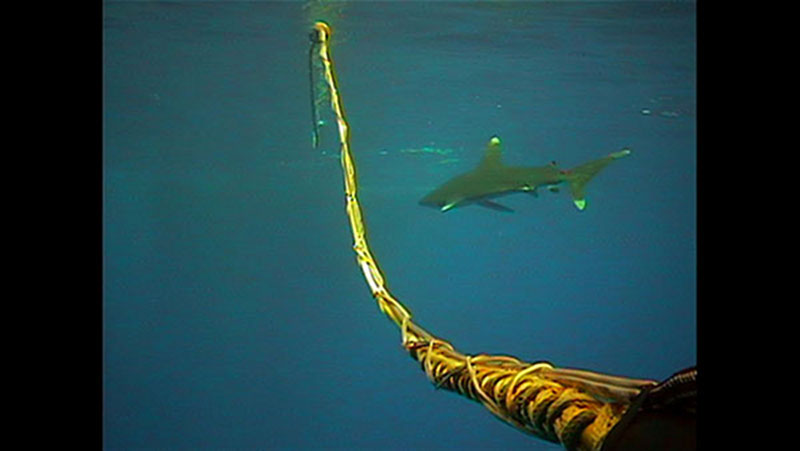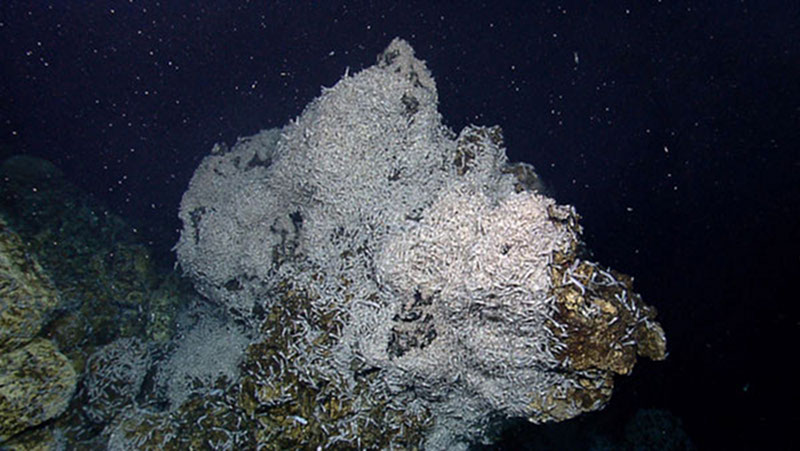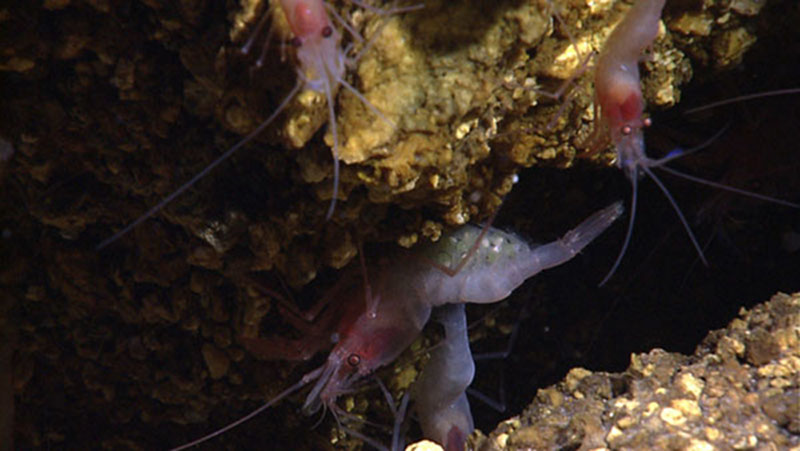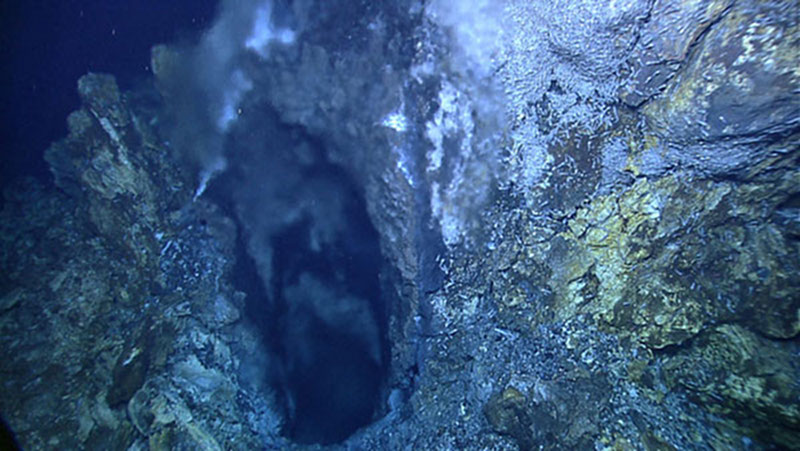
By Keeley Belva, Communication Coordinator - NOAA Office of Ocean Exploration & Research
August 10, 2011

As “Little Herc” was surfacing, the cameras captured something we hadn’t been expecting to see—this oceanic white-tip shark investigating the ROV tether. Image courtesy of NOAA Okeanos Explorer Program, MCR Expedition 2011. Download larger version (jpg, 821 KB).
With all of the amazing technology that we are using for these expeditions—real-time voice communications, live-streaming video, etc.—sometimes there are bound to be a few glitches. We encountered some of those today in the Rhode Island Exploration Command Center when we couldn’t see the video feeds well enough to fully participate in the ongoing exploration. This also translated into black screens on the website’s live feeds, so you probably couldn’t see anything either!

This is one of the “shrimp spires” that we found during the first few dives, in the area known as Von Damm. The shrimp (possibly Rimicaris sp.) are crawling all over the rocks, likely attracted by the warm fluid seeping from the spire’s surface. Image courtesy of NOAA Okeanos Explorer Program, MCR Expedition 2011. Download larger version (jpg, 1.8 MB).

Green eggs can be seen on this alvinocarid shrimp living near a hydrothermal vent at the Von Damm site. Image courtesy of NOAA Okeanos Explorer Program, MCR Expedition 2011. Download larger version (jpg, 1.5 MB).
Luckily the video cleared up by the end of the day—thanks to a lot of troubleshooting on shore by a great technology team! Even though the video feeds weren’t coming through very well for us throughout most of the day, the ship was able to carry on with their mission and continue to capture video and gather mapping data to provide the shore-side scientists with information needed to keep working and planning.

We have also been finding some interesting geological features—this opening was approximately three feet wide—about the same size as the Little Hercules ROV —and had hot fluid coming from it and many shrimp living nearby. Image courtesy of NOAA Okeanos Explorer Program, MCR Expedition 2011. Download larger version (jpg, 1.6 MB).

This jelly made an appearance as we were examining some of the cracks in the seafloor. Image courtesy of NOAA Okeanos Explorer Program, MCR Expedition 2011. Download larger version (jpg, 1.4 MB).
During this expedition we have worked to make video viewable by both shore-side scientists and the public in real-time. The highlights of the dive are then captured in a subset of products, including video clips and still images created by video technicians on board the ship. These video and image clips are an important part of the data that we collect. Imagery is provided to the science team during the expedition and also made available to the public on this website, as well as stored in NOAA archives.

Weathered hydrothermal sulfide rubble on the side of one of the main spires at the Von Damm site. Image courtesy of NOAA Okeanos Explorer Program, MCR Expedition 2011. Download larger version (jpg, 2.1 MB).
While the video feeds weren’t working today, we took some time to look through some of the images that we’ve collected so far during the expedition. These are some of our favorites from the first few dives.